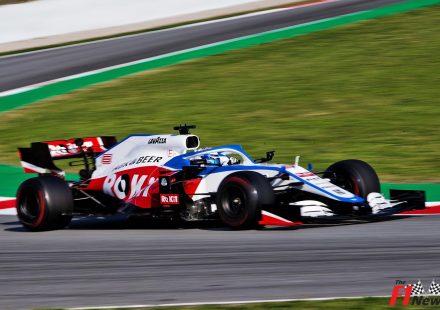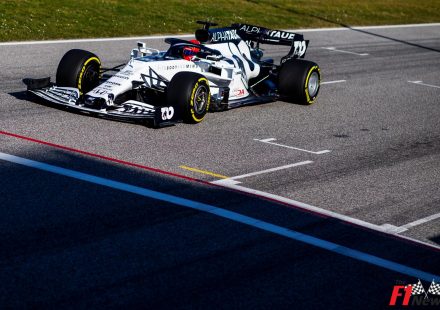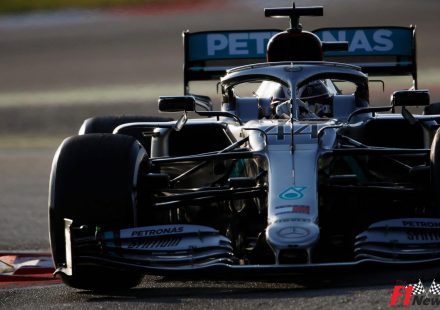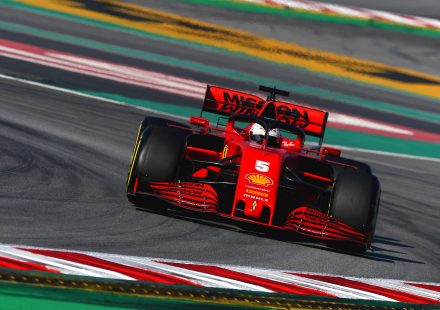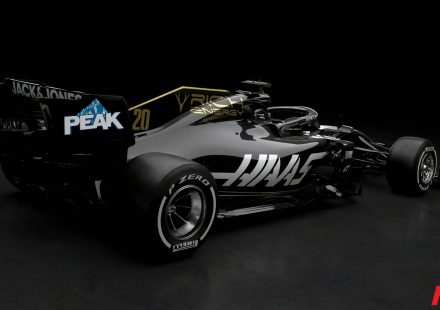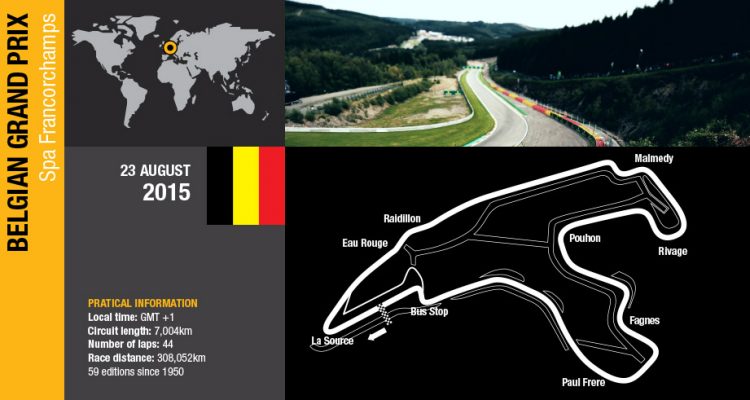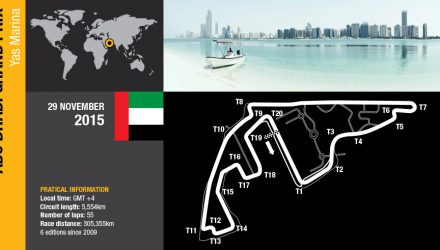RÉMI TAFFIN, DIRECTOR OF OPERATIONS
We’ve been extremely busy in the four weeks since the Hungarian Grand Prix. In contrast to the teams, who had to shut their factories, we’ve been operating throughout the summer break to continue our development programme. The dynos have run as usual and we’ve conducted some notable performance work for the rest of the season and also concepts for next year. The results are good.
In parallel we have been preparing for Spa, which presents the hardest test of the year for the power units. The wide open throttle time is as high as Monza, but it’s the corners, changes of altitude and length that increase the difficulty.
We are realistic about the challenge facing us and the strength of the opposition at this point in time. The double podium in Hungary – and our win last year in Spa – show anything is possible so we go there in this frame of mind: concentrate on our job, do the best we can and take advantage of the circumstances as they come about.
RENAULT 2015 FAST FACTS
Weather is always a factor in Spa, but rain can cause issues for the contemporary power units, which are loaded with electrical systems. If water enters, these systems could short out. F1 cars are now equipped with military spec wiring but special care will be taken to insulate the systems against the humidity, with ducts fitted to divert rain away from the systems in case of torrential rain. It’s a useful precaution as it has rained in Spa every year since 2007!
Eau Rouge is the most famous turn on the Spa-Francorchamps circuit. It is technically more of a left hand kink in the track as it rises from La Source and crosses the Eau Rouge stream. A blind summit and a bump on the exit make it a fiendish challenge to get right. Eau Rouge is now taken flat out at 310kph but it took until the mid-point of the V8 era for cars to have the right power-to-grip ratio to floor it through the bend. At the start of the V8s and all through the V10s drivers would lift off to scrub some speed for the entry and apex.
While qualifying is significant in every race, the length of the circuit and the multiple overtaking opportunities do not place an over-arching importance on it in Spa. In fact only three polesitters have taken victory in the last ten years.
The Renault turbo made its Spa debut in 1978. The challenges of Spa have always caused a race of attrition and it took until 1980 for Rene Arnoux to score Renault’s first finish. Alain Prost won from pole position in 1983 with Derek Warwick second in 1984. Ayrton Senna (Lotus-Renault) took the win in 1985 and came second in 1986. In the normally aspirated era, Damon Hill (Williams) and Michael Schumacher (Benetton) gave Renault consecutive wins from 1993 to 1995 before Sebastian Vettel took wins for Red Bull in 2011 and 2013. Daniel Ricciardo took the third win for the Renault Energy F1 power unit in 2014.
FOCUS ON…BELGIUM 1993
After a dominant championship win in 1992, the pressure was on Williams-Renault to repeat its success the following year. But it was not easy: a full driver line-up change saw Alain Prost replace the outgoing champion, Nigel Mansell, and Damon Hill step up from his test driver role. Advances in active suspension and a ban on driver aids and had also necessitated a re-work of the fêted FW14B chassis powered by the Renault engine.
The season started well enough, with Prost taking pole position in every race until the Canadian Grand Prix. Race days were more of a challenge, however, and the Senna threat was very real. Three wins apiece in six races spiced up the championship, until Prost took the advantage with four consecutive mid-season victories. Quietly, new recruit Damon Hill was also gathering momentum and sealed his first win at the Hungarian Grand Prix in mid-August. Williams had consolidated its championship leading status and it was just a matter of time before a second constructors’ crown was wrapped up.
Head of engine build, Régis Ramauge, was working on both cars in the Williams garage in 1993. He remembers arriving in Belgium as Prost and Williams edged closer to the title. ‘Spa was a classic track, even back in the early 90s. The corners were fast and flowing, and you needed to be brave. Eau Rouge could just about be taken flat if you had the right car, but the threat of an accident was never far away. Every off track excursion would have serious consequences; Alex Zanardi had had a huge crash in Friday practice that ended his season.
‘We arrived in Spa fairly confident. Alain had had a difficult race in Budapest, with some mechanical issues, but he was not far from the championship at that point, despite a strong early season challenge from Senna. Williams had built the best car again and it worked in perfect harmony with our engine.
‘Damon had taken his first victory in Hungary just two weeks before. He had been very impressive that season, stepping up from the test driver role quite easily. He was very well prepared, had done lots of kilometers, and knew the team well.
‘We went to the resplendent Spa circuit under a certain amount of pressure. Lots of people from Viry had made the trip, as well as a large delegation from Renault. Trackside, we knew that it would be tough for Alain. Damon would be strong, but Ayrton Senna too and a certain Michael Schumacher as well.
‘We took pole position relatively easily, as we had done in all the races so far. Alain kept the lead at the start from Ayrton and Damon. He was far from at ease with all the complicated electronic systems in the car, but he wasn’t called The Professor for nothing: he drove round his worries and could pull out a lead when he needed to. He looked in control until his second stop, but a slow stop dropped him back behind Damon.
‘Damon inherited the lead, while Alain fell to third behind Schumacher. He tried to get back into second, but with the championship close by he kept position. Damon held on to take the win, his second of the year. It was also the 50th win for Renault in F1. It’s a big number, but it’s funny as I don’t remember a lot of celebration about that statistic at the time. It seems that we were so dominant in the 90s that we knew we could achieve that number sooner rather than later.
‘What was important, though, was the fact we won the constructors’ championship with that result. It proved that we’d yet again built a fantastic car with Williams. Damon would win again in Italy just two weeks later, and Alain would go on to take his fourth championship in Portugal after that. It may have taken a bit longer to get the wins than the previous year, but in the end we got what we wanted.’
POWER UNIT DETAILS
ICE
Spa is the hardest circuit of the year for the Power Units. Over 65% of the 7km track is spent flat out, which translates as around 73secs per lap, the longest accumulative wide open throttle time of the year.
The first period of sustained throttle is the climb from the La Source hairpin to the chicane at Les Combes. It takes around 25secs with the driver flat on the throttle throughout. The distance is only slighter shorter than a runway at Charles de Gaulle airport.
Almost all of sector three is taken flat out. From Stavelot through Blanchimont to the Bus Stop chicane, the Renault Energy F1 will be at wide open throttle for 20secs. The remainder of the throttle time comes from the bursts of power between corners.
The track’s layout can be likened to a rollercoaster circuit where parts are loaded and unloaded in quick succession. The track drops over 40m from La Source before climbing over 80m back to Les Combes, equivalent to a gradient of 1 in 4. The descent compresses the internals but going over the crest of the hill, the vertical force is suddenly lifted and the parts unloaded, with the vertical forces switching to -3g. It can be equated to the feeling on a rollercoaster drop when your body feels compressed and pushed down into the seat but weightless when you go over a bump.
The altitude of Spa also affects fuel consumption. At its highest point the circuit is around 500m and the air is approximately 5% less oxygen rich than at sea level. With less oxygen going into the engine, around 1% less fuel is burned at Les Combes than at La Source.
TURBOCHARGER
Turbo response in Spa is one of the critical performance factors. The majority of slow corners, for example the Bus Stop chicane, Les Combes and La Source are followed by a burst of throttle. Engineers will therefore look specifically at the engine maps to bring the delay in response as close to zero as possible. In fact, the time lapse between the driver putting his foot on the throttle and the turbo kicking in is now around 0.2s.
The turbo will be rotating at close to its maximum to keep pace with the high rotational speeds of the ICE. The altitude will further increase rpm. At its most extreme the turbo will be spinning at more than 95,000rpm or over 1,500 revs per second!
MGU-K
Spa is one of the most demanding tracks on the MGU-K. Each of the braking points comes after a long burst of power so the energy dissipated through the brakes is enormous.
The best opportunity for the MGU-K to recover energy is the Bus Stop chicane, which the driver approaches at over 300kph and brakes down to just 75kph.
At La Source, car speeds drop to just 70kph and engine revs to around 8,700rpm. The combination of MGU-K, ICE and brakes need to dissipate 2MJ of energy during this braking event – front brake temperatures will rise by more than 300°C to achieve this, even though the MGU-K is at the full recovery allowed by the regulations.
MGU-H
Sector two has the majority of corners and is therefore the least power sensitive part of the track. This pushes us to recover as much energy as possible on the MGU-H whilst maintaining good turbo response.
High-speed flowing corners such as Pouhon and Fagnes are the best opportunities and will feed the recovered energy to the MGU-K and ICE on the next period of throttle through Blanchimont.

